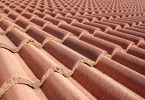Thermal insulation can be defined as the process which aids in the reduction of the transfer of the heat from outside to inside. Thermal insulation enables consistency in room temperature by keeping the room cooler in summer and warmer in winter from the outside. It is energy saving as the transfer of heat from inside to outside and vice versa is limited.
[Image source- topenergysavingguide.com]
Discussed below are some core insight of thermal insulation and how it consumers can procure from it.
Principles of thermal insulation:
The principle of thermal insulation states that resistance ability of insulating material is dependent upon the class of material and the thickness being used. Allocation of the air gap is also a key factor. Alignment of the building plays a key role in thermal resistance. The design could be done in such a way that solar energy is maximum during summer and vice versa during winter.
Choice of insulating materials:
While choosing the best possible materials, there are some prerequisites that one could consider. Some of them are discussed below.
- Costing of the insulating material
- Measurement of the area where insulation is to be done
- Degree of insulation required
- Costing of energy being consumed for heating and cooling
- Sensible fire proof
- Non- absorption of moisture
- Non – vulnerable to undergo deformation
- Insolent of attack of little insects
Insulating materials:
Identifying basic insulating materials are important. Here is a list of basic insulating materials; wool insulation materials, slag slabs, natural fibre insulation materials,porotherm bricks, gypsum board, vermiculite and perlite insulation materials, cementitious foam insulation materials, gasket cork sheet, insulation facings etc.
[Image Source- insulation.com]
Advantages of insulating materials:
There are several benefits of thermal insulation, some of them are discussed below:
- Comfort: Thermal insulation provides a contented environment, by keeping the room temperature cooler during and warmer during winter.
- Saving electricity: A lot of electricity is lost for saving energy by using fuel, for room temperature control. Thermal insulation aids in saving electricity by naturally by reducing the transfer of transfer of heat/cold from outside to inside.
- Resistance against condensation: Condensation might appear because of the leaked pipes or because of water seeping through. Condensation generally occurs when moisture in the air comes in contact of surfaces having the temperature below the dew point. Thermal insulation material protects homes against the condensation of interior walls and ceiling by fixing upon the inside surface of the room walls.
According to www.vse.sk,up to 50 percent of energy saving can be done by thermal insulation of buildings.
Different processes of thermal insulation:
There are several processes of thermal insulation, depending upon need and demand, the procedure varies. Discussed below are some common types of thermal insulation and procedures of how they can be put to action.
Thermal insulation of exposed walls:


Temperature difference may lead the walls of the buildings exposed to condensation. Discussed below are some common methods of thermal insulation of exposed walls.
- Consumers can choose to provide sufficient thickness to the wall
- Try providing hollow or cavity wall
- For creating air space consumers can choose to fix hardboards or plyboards on wooden shaft over the wall
- Try fixing thermal insulating material sheet inside and outside exposed wall, for maintaining stability of heating and cooling
- Construction of an outer wall with thermal insulating material is also a feasible option
Thermal insulation of exposed doors and windows:
[Image Source- windowfactory.com.]
Doors and windows distribute heat/cold from the atmosphere. Some common process of thermal insulation are:
- Consumers may prefer wooden frames over iron frames, as the irons transmit more heat/cold
- You can try to fix insulated glass in doors and windows
- Double glass with air space is also a feasible choice
- Sunshade projection in front of doors and windows to prevent heat and rain
- Use curtains as well as ventilation blends
Thermal induction of exposed roof:
[Image Source- lowenergyhouse.com]
Roofs are always exposed, be it one storey- building or multi- storeyed. When it comes to the roof, there are two types of thermal insulation possible, divided as internal treatment and external treatment.
A. Internal treatment:
- Try providing air gap for the underexposed part of the roof by deploying ceiling under the roof
- Ventilation adjoining the roof also helps for passing the hotness from the room
- Installing false ceiling with thermal insulation materials such as glass wool, thermocol, mineral etc, might just be the trick
B. External treatment:
- Use koramic clay tiles, for roofing solution. Clay tiles act as an energy saver and provides resistance against weather changes. They are durable and cost effective
- Suitable shades could be provided on the exposed surface of the roof
- In case of flat rooftop, you can create an air space top by placing asbestos sheets on brick pillars, use clay bricks
- Laying earth under tile terracing also serves as agent of thermal insulation
Prevention is always better than cure. Be smart, use thermal insulation. For long run and soothing environment, thermal insulation is almost a necessity. Don’t take the chance with your future.
Authored by a Building Expert from Wienerberger India
For an expert advice, drop a word at our email id gosmartbricks@gmail.com












